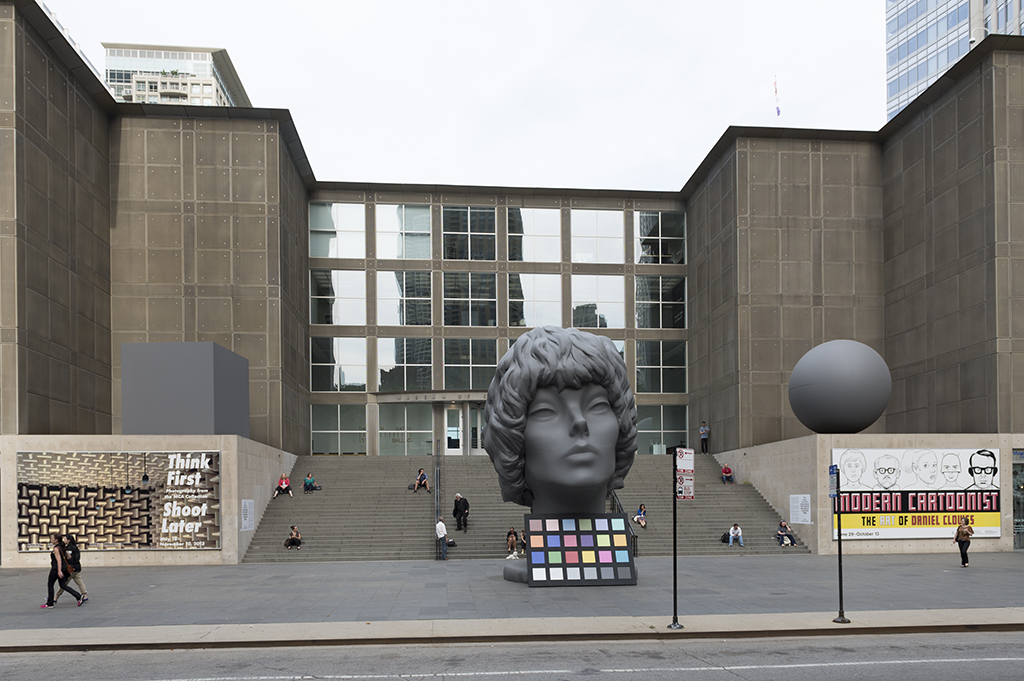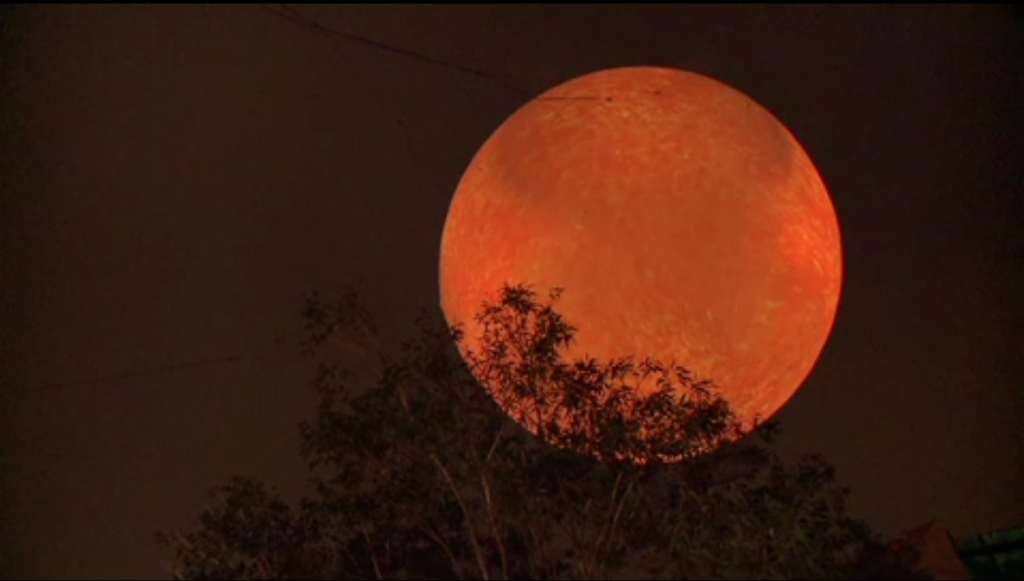Monument: Anti-Monument
by Stephanie Cristello
ST. LOUIS, MO. Within the context of public sculpture and installation, a friend and I often talk about the pejorative category of merit-badge art. I have since found myself applying it to almost every context and conversation surrounding public art that I am forced to think about, or address on any higher level of engagement beyond spectacle, or strained entertainment. What is disappointing is that many of these public projects are by familiar artists whose work I actually like to engage with in exhibitions, but whose city commissions I just cannot get behind, or questionably exist for a fairly transparent pitch toward an endowment or government funded grant, or tourism plea, etc. Diluted and derived with some intricate explanation of how the piece morally operates – either as some comment on human experience, or saccharine reasoning toward connectivity – one has to think: if it was really that good, it wouldn’t need to try so hard.

The pieces that belong to this realm of public art – to the monumental – are often packaged for press releases for outside parties, but lack any criticality or depth. Though they claim to belong to some sort of moral high ground, these works frequently leave the communities they engage with confused, or worse-yet cheated, or exploited. But large-scale work of this nature requires money, and “art” in these contexts becomes a loose term. So – how do you define real work within the context of a monument? Chicago has certainly seen its number of successful commissions – Kay Rosen’s Go Do Good, or Amanda Ross-Ho’s Plaza Project at the MCA, THE CHARACTER AND SHAPE OF ILLUMINATED THINGS, are just a few that have been installed in recent years. But these pieces depend on their scale, and just so happen to also be public. So, is the monumental really in opposition to art, or is scale just one unfortunate factor in a list of many that relegates public art to the fringe of critical work? Or, if the signifier of the monument is bad, what does the anti-monument look like, and how does it operate?
This past weekend marked the dates for Monument/Anti-Monument, an international conference program of Sculpture City St. Louis, spearheaded by Laumeier Sculpture Park and Via Partnership, which addressed these very issues. The keynote, Rafael Lozano-Hemmer transcended, as the conference as a whole did, the stigmas of public art and practice. This is an artist who does not define the opposite of the monumental as necessarily the minor or the unimportant – but the diversified, the multi-lithic. “Our traditional understanding of a ‘monument’ is that it pretends to capture, represent, remember, or celebrate a moment in history or the figure of some great leader,”1 said Lozano-Hemmer in conversation with Jessica Baran. And it is precisely this distrust, or this pervasive will to acknowledge the artificiality of monuments and public actions themselves, that has made his projects so successful.
For those unfamiliar with his work, Lozano-Hemmer is known for his large-scale installations appearing in expansive public spaces, often labeled relational architecture, though he is quick to note this was before Bourriaud “ruined the term.” During the keynote, it was made clear that the selection of work discussed at length was only a sample of his practice, not its entirety. While these projects are megalithic and require a lot of funding, they are not made big for the sake of scale; they depend on their magnitude. Pulse Park from 2008 is a perfect example, a commission for Madison Square Park that consisted of about 200 bright spotlights positioned around the perimeter of the space. A pulse sensor was placed near the center of the park where visitors cold go and hold the piece, and the entire park would be timed to the heartbeat of the participant in waves of light. Other works exist as an element of difference that viewers interact with just by virtue of being in the same place, such as Solar Equation, a faithful simulation of the movement on the sun’s surface, projection mapped onto the world’s largest spherical balloon. The simulated sun was installed in Australia in the winter, hanging low enough in the sky that you would assume it gave off heat. In both projects, the mechanics of the devices creating the simulation are left bare, unprotected and without deceit. Though spectacular – in the sense that viewers are captivated to watch the event unfold – they are also participatory and crowd-driven, and not just in a way that incorporates the select few of the art world.

With regard to site-specificity and community engagement, Lozano-Hemmer notes, “I am not really against it, but beside both of these approaches.”2 While ephemeral, the pieces he creates with light are very different than his predecessors, “Turrell was a Quaker – his use of light points toward a type of spirituality, a light from within. My light comes from within nightclubs, among transvestites [laughs].” Lozanno-Hemmer’s works hinge on this nonchalance, which is hard to achieve at such scale. Yet, while the works themselves are poetic, they are also didactic to a certain degree. This quality only helps the conversation, emphasizing an attitude toward integrated space, where the public realm is treated as a backdrop, not a soapbox. In this way, Lozano-Hemmer’s work begins where the monument ends and the anti-monument begins, disavowing a diluted political message in favor of an actual experience that embraces and exposes its own artificiality – one that hopefully identifies with a larger percentage of those working within the public art sector in the years to come.